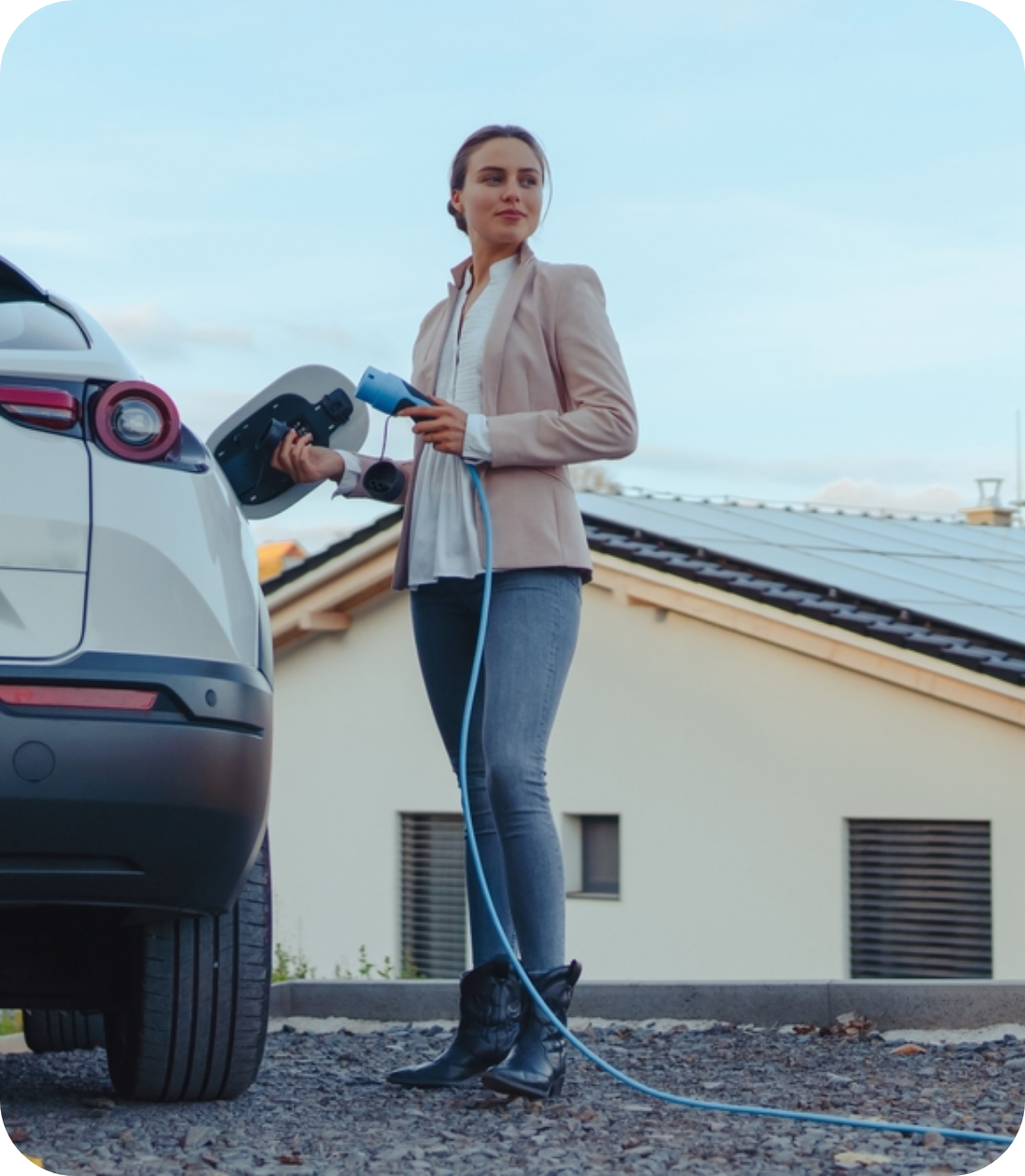Are Electric Cars Better for the Environment?

The demand to go green is becoming more prevalent. Consumers are becoming more aware of their purchasing decisions, supporting environment-friendly brands1 and opting for more sustainable products2.
This environmentally friendly change in behavior is evident with the rise of electric car (EVs) sales in 2022, with 10.5 million sold worldwide, a 55% increase from the previous year3. Understandably, vehicles and transportation are at the forefront of the battle against climate change since 29% of greenhouse gas emissions come from this industry. You might be one of the many people who would like to shift to a more environmentally friendly mode of transportation.
However, despite not having any tailpipe emissions, production and use of EVs still produce emissions, which causes people to ask the question, are electric cars better for the environment? Axia breaks it down below so you can make an informed decision that will benefit the environment and electrify your life.
Are Electric Cars Better for the Environment?
Before you can answer the question, “are electric cars better for the environment,” it is helpful to know the causes of carbon emissions in EVs.
Unlike vehicles with Internal Combustion Engine (ICE), we know that EVs don’t have a tailpipe. Therefore, EVs do not produce any carbon emissions on the road. The Massachusetts Institute of Technology conducted a study comparing the carbon emission of EVs against hybrid and Internal Combustion Engine (ICE) vehicles. The study showed EVs had fewer carbon emissions at 200 grams per mile. Hybrid cars came up with 260 grams, and ICE vehicles with more than 350 grams.
On the road, EVs may be the better choice for the environment. However, the question “are electric cars bad for the environment” arises when we factor in their production and use, mainly the production of electricity used to charge them.


How Does Electric Car Production Affect the Environment?
The main difference between building an ICE vehicle and an EV is the production of large lithium-ion batteries EVs need to power their electric motors. Production of these batteries requires minerals like lithium, nickel, and cobalt to be mined and heated at high temperatures. The amount of emission depends on the fossil fuel used to mine and heat the minerals. However, building a lithium-ion battery for a Tesla Model 3, for example, may produce 2.5 to 16 metric tons of CO2.
Reuse and Recycle
With the increasing popularity of EVs, the production and disposal of their lithium-ion batteries have become a concern. Fortunately, a growing number of companies recycle these lithium-ion batteries. They have the facilities and expertise to properly discharge, process, and dismantle used EV lithium-ion batteries in order to recycle them into new ones.
What About The Electricity Required To Fuel an Electric Car?
Not all electricity is created equal, and the carbon emission related to EV charging depends on where it is running and the source of electricity in the area. For example, some countries, like China, use coal to produce electricity. The burning of coal to produce electricity in these countries hinders EVs’ environmental efficiency. On the other hand, countries that use sustainable energy, like the hydroelectric power plants of Norway, provide the best-case scenario for EVs.

Are Hybrid Cars Just as Good for the Environment?
Hybrid cars are ideal for those who want to transition slowly into EVs since they have an internal combustion engine and an electric motor. The difference between hybrid cars and pure EVs is how it generates power. The two main types of hybrid cars, full hybrid (FHEV) and plug-in hybrid (PHEV), utilize their ICE and electric motor to power the vehicle.
So, does the presence of an electric motor make hybrid cars just as good for the environment?
As mentioned earlier, hybrid cars produced 260 grams of CO2 per mile compared to the 200 grams produced by EVs. They may have more carbon emissions but are still significantly lower than traditional ICE vehicles. However, similar to a pure EV, the environmental efficiency of a hybrid car still depends on the source of electricity in its area.
The Greener Future
Whether you choose a pure EV or a hybrid, you are helping lower carbon emissions. You can also use renewable energy to charge your EVs, lessening carbon emission levels even more.
Solar power is a convenient source of renewable energy. Unlike other renewable energy sources, solar does not require extensive facilities. It is widely available across the world and is a free natural resource.
Charging Your EV With Solar
Can solar energy power an EV? The answer is yes! When you have a solar system, it powers your home seamlessly, just like power from the grid. If you are charging your EV at home during the day, you’ll be pulling power directly from your solar system.
The Government and Electrical Vehicles
In an effort to make electric vehicles more accessible and preferred, there are several government policies that will help shape the future of EVs. These policies include financial incentives, charging infrastructure development, and regulation measures to make these vehicles more sustainable.
The Bottom Line
Are electric cars better for the environment? In most cases, they are. They may not be perfect, as there are still emissions during the manufacturing and electricity production processes, but EVs are a significant step in the right direction. And, as we strengthen the efforts towards a greener future, Axia Solar provides the services and equipment to access renewable energy from your roof. Get a custom solar quote for your home to learn more!